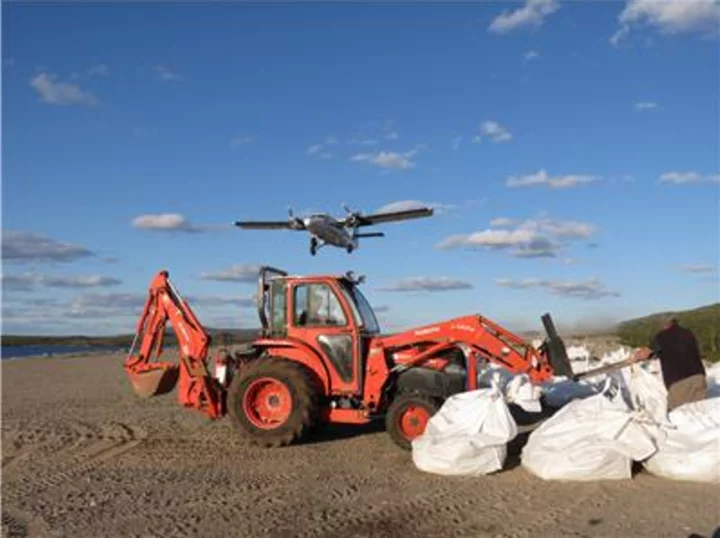
You can still grab the Series 8 for $70 off, plus other Apple Watch deals this week
UPDATE: May. 24, 2023, 5:00 a.m. EDT We've updated this post to reflect the most
2023-05-24 17:53

Amazon experiments with using AI to sum up product reviews
Amazon is experimenting with using artificial intelligence to sum up customer feedback about products on the site, with the potential to cut down on the time shoppers spend sifting through reviews before making a purchase.
2023-06-14 01:57

MrBeast: What happens when you win fan favorite YouTuber's challenge?
MrBeast has highlighted how his actions accomplish a lot of good despite frequently being accused of 'f***king people over'
2023-06-03 15:55

Insurance Group Loses More Members After GOP Attacks on ESG
Tokio Marine Holdings Inc., Japan’s largest insurer by market value, is withdrawing from the Net Zero Insurance Alliance,
2023-05-30 16:54

Adin Ross destroys his setup while playing Fortnite, Internet dubs game 'aggravating'
During a recent gaming livestream with his friends, Tfue and Clix, Adin Ross lost his cool as he was defeated in a 1v1 battle
2023-11-26 15:19

Transact Campus Secures One Million Mobile Credentials
SCOTTSDALE, Ariz.--(BUSINESS WIRE)--Jun 22, 2023--
2023-06-22 22:29

Ex-DC Metro contractor logged in to sensitive system from Russia, watchdog finds
A former Washington, DC, Metro transit system contractor retained access to "critical and sensitive" Metro data from his computer in Russia after he left his job in a breach that raises broader security concerns about one of the nation's largest transit systems, according to a report released Wednesday.
2023-05-18 02:54

EU opens an investigation into Elon Musk's X over 'disinformation'
The EU has opened an investigation into Elon Musk's X over the possible spread of terrorist and violent content, and hate speech, after Hamas' attack on Israel. The EU's industry chief, Thierry Breton, confirmed on Thursday the bloc had sent Twitter/X a "formal request for information" to determine whether the platform was complying with the Digital Services Act (DSA) - a law designed to protect users of big tech platforms which came into effect November, as misinformation about the conflict between Israel and Hamas spreads on social media. In a statement on Thursday, the EU said “the European Commission services sent to X a formal request for information under the Digital Services Act (DSA)”. “This request follows indications received by the Commission services of the alleged spreading of illegal content and disinformation, in particular the spreading of terrorist and violent content and hate speech. The request addresses compliance with other provisions of the DSA as well.” In his letter to Musk, Breton said "violent and terrorist content" had not been taken down from X, despite warnings. Breton did not give details on the disinformation he was referring to in the letter, but said instances of "fake and manipulated images and facts" were widely reported on the social media platform. Responding on X, Musk said: "Our policy is that everything is open and transparent, an approach that I know the EU supports. "Please list the violations you allude to on X, so that the public can see them." X chief executive Linda Yaccarino also said earlier on Thursday the platform had removed hundreds of Hamas-affiliated accounts and taken action to remove or label tens of thousands of pieces of content since Saturday's attack. Sign up to our free Indy100 weekly newsletter Have your say in our news democracy. Click the upvote icon at the top of the page to help raise this article through the indy100 rankings.
2023-10-13 18:16

Valorant Knight's Market Buddy: How to Get for Free
To get the Valorant Knight's Market Buddy for free, players must link their Riot Games account to their Amazon Prime account and then claim the reward.
2023-08-31 04:49

Spider-Man 2 Trophy List
Here's every trophy list in Marvel's Spider-Man 2
2023-10-21 04:45

Torngat Metals Partners with Metso for Pilot Scale Ore Processing
MONTRÉAL & HELSINKI--(BUSINESS WIRE)--Jun 5, 2023--
2023-06-05 20:21

‘Robot taxi’ with smiling face and ‘ghost driver’ interacts with pedestrians in new experiment
The UK’s first-ever “ghost driver” has taken to the roads of Nottingham in a new experiment. A driverless car was been fitted visual displays to communicate with people crossing roads to determine how people respond naturally to self-driving vehicles. The screen shows different images to pedestrians - including a happy face, a giving way face, and a raised eyebrow. A University of Nottingham study found that, in the absence of someone in the driving seat, pedestrians trust certain visual prompts more than others when deciding whether to cross in front of an autonomous car.
2023-06-08 14:54
You Might Like...

Trump news – live: Trump suggests White House concealing security footage over cocaine scandal as Don Jr branded ‘big baby’

JiDion and Niko Omilana praise xQc's goalkeeping skills, dub him a 'tough' player

'Hypocrite' Andrew Tate shames Amanda Holden over bikini pics, asserts 'you're far past a teenager', trolls ask 'are you Twitter moral police?'

Cards Against Humanity Just Released Its First New Party Game in Over a Decade

Will Ludwig join Kick? Pro streamer's verified account on platform sparks speculations among fans: 'It's never too late'

Powin Signs 10GWh Agreement with EVE Energy

Nintendo to Release Switch Games Until March 2025

Tray.io Unveils Merlin AI to Instantly Transform Large Language Model Outputs Into Complete Business Processes
